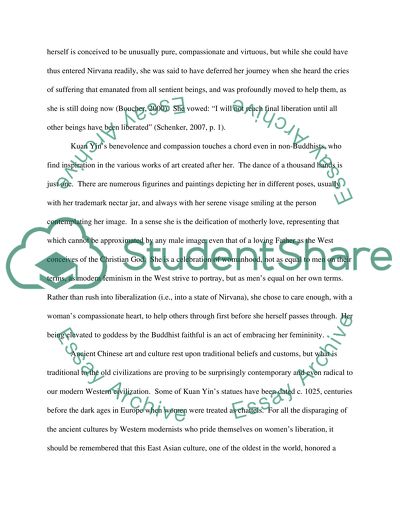The Divine Feminine in Buddhist Art Essay Example | Topics and Well Written Essays - 500 words. Retrieved from https://studentshare.org/other/1401186-essay
The Divine Feminine in Buddhist Art Essay Example | Topics and Well Written Essays - 500 Words. https://studentshare.org/other/1401186-essay.


